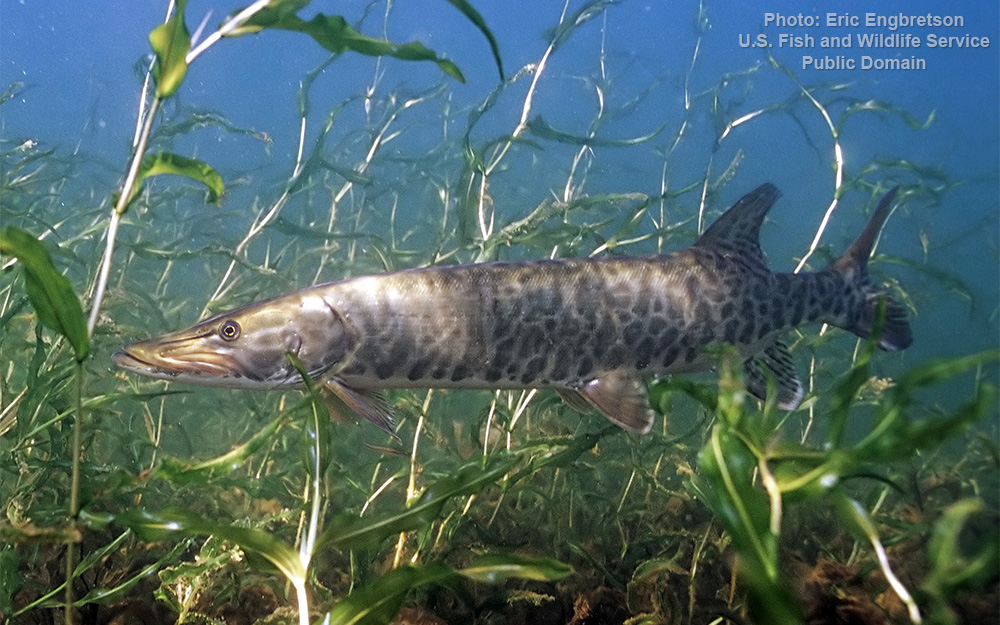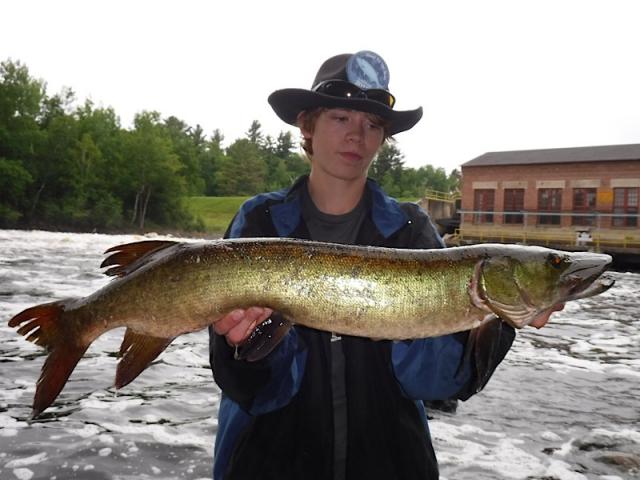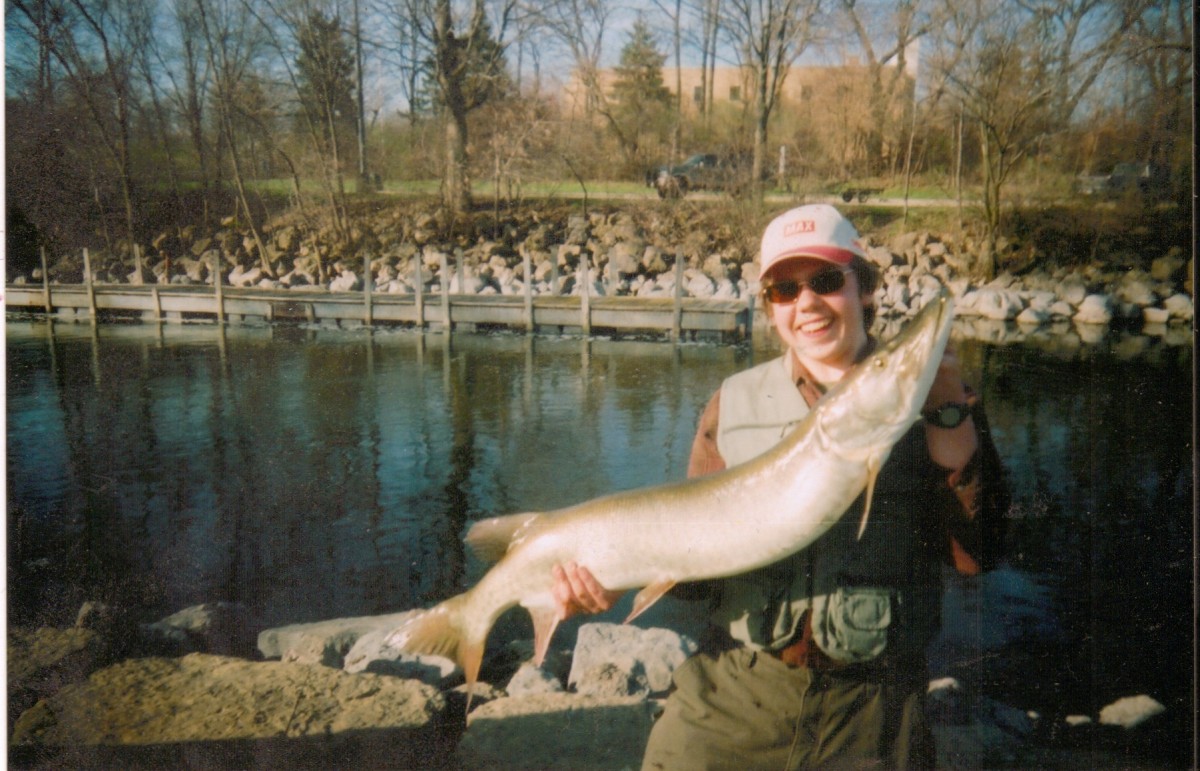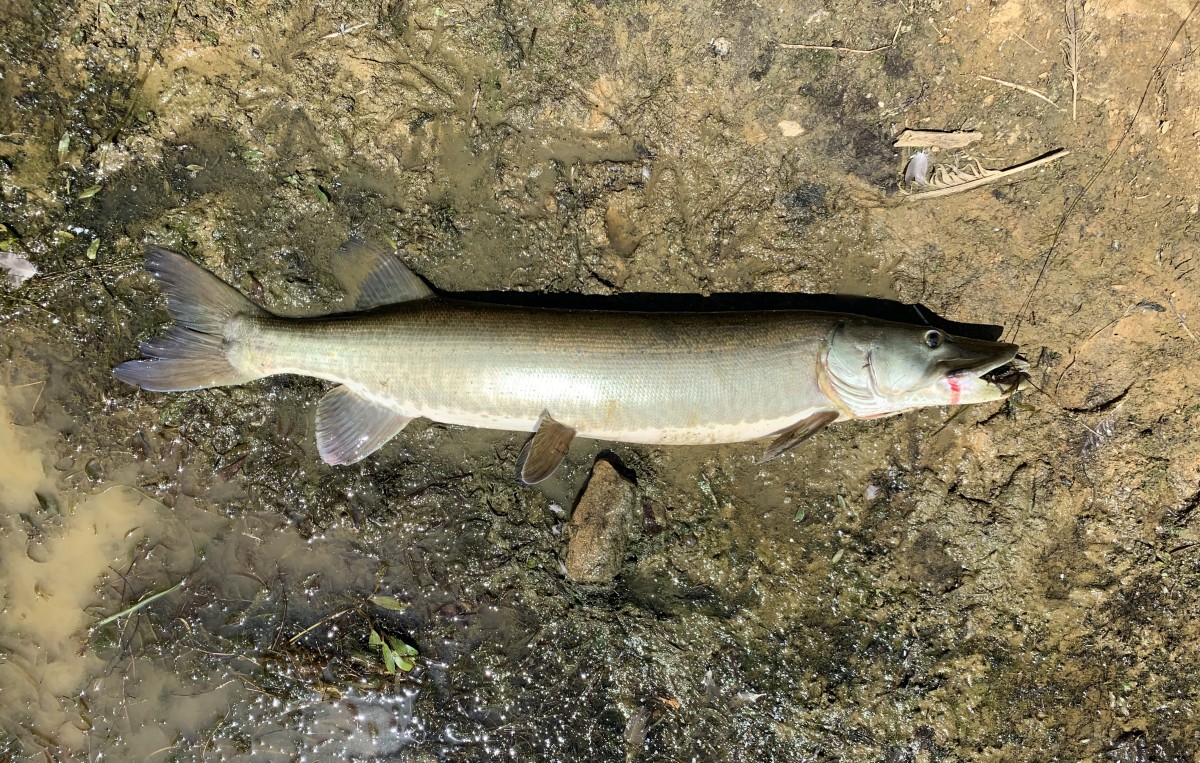Muskellunge
(Esox masquinongy)

Classification
General data
The muskellunge (Esox masquinongy), often shortened to muskie, musky or lunge, is a species of large freshwater predatory fish native to North America. It is the largest member of the pike family, Esocidae.
Muskellunge closely resemble other esocids such as the northern pike and American pickerel in both appearance and behavior. Like the northern pike and other aggressive pikes, the body plan is typical of ambush predators with an elongated body, flat head, and dorsal, pelvic, and anal fins set far back on the body.
Muskellunge are typically 28–48 in (71–122 cm) long and weigh 15–36 lb (6.8–16.3 kg), though some have reached up to 6 ft (1.8 m) and almost 70 lb (32 kg).
Martin Arthur Williamson caught a muskellunge with a weight of 61.25 lb (27.8 kg) in November 2000 on Georgian Bay.
The fish are a light silver, brown, or green, with dark vertical stripes on the flank, which may tend to break up into spots. In some cases, markings may be absent altogether, especially in fish from turbid waters. This is in contrast to northern pike, which have dark bodies with light markings. A reliable method to distinguish the two similar species is by counting the sensory pores on the underside of the mandible. A muskie will have seven or more per side, while the northern pike never has more than six. The lobes of the caudal (tail) fin in muskellunge come to a sharper point, while those of northern pike are more generally rounded. In addition, unlike pike, muskies have no scales on the lower half of their opercula.
Anglers seek large muskies as trophies or for sport. In places where muskie are not native, such as in Maine, anglers are encouraged not to release the fish back into the water because of their alleged negative impact on the populations of trout and other smaller fish species.
Muskellunge are found in oligotrophic and mesotrophic lakes and large rivers from northern Michigan, northern Wisconsin, and northern Minnesota through the Great Lakes region, Chautauqua Lake in western New York, north into Canada, throughout most of the St Lawrence River drainage, and northward throughout the upper Mississippi valley, although the species also extends as far south as Chattanooga in the Tennessee River valley. Also, a small population is found in the Broad River in South Carolina. Several North Georgia reservoirs also have healthy stocked populations of muskie. They are also found in the Red River drainage of the Hudson Bay basin. Muskie were introduced to western Saint John River in the late 1960s and have now spread to many connecting waterways in northern Maine. The Pineview Reservoir in Utah is one of three Utah locations where the hybrid Tiger Muskellunge is found.
They prefer clear waters where they lurk along weed edges, rock outcrops, or other structures to rest. A fish forms two distinct home ranges in summer: a shallow range and a deeper one. The shallow range is generally much smaller than the deeper range due to shallow water heating up. A muskie continually patrols the ranges in search of available food in the appropriate conditions of water temperature.














